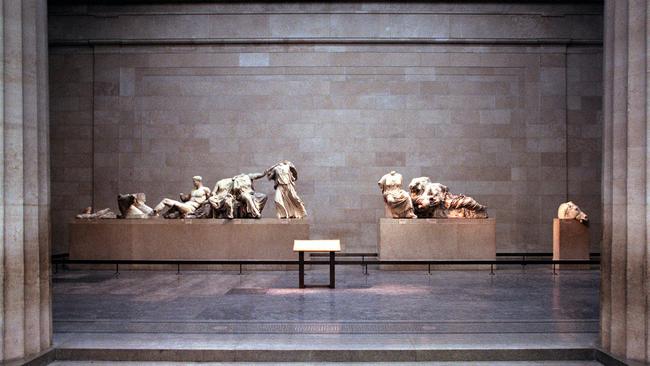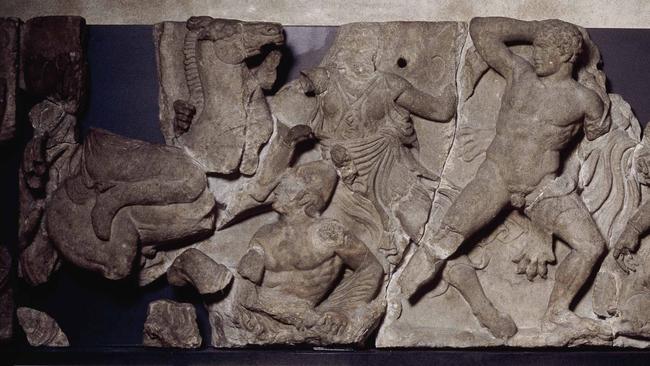Britain must return the Parthenon Marbles to Greece as a moral duty

Thousands of buildings throughout the world have borrowed from, or attempted to imitate, it. Situated on the rock of the Acropolis, it overlooks four million Athenians, most of whom will never get to enjoy half of its sculptures because they are in the British Museum.
In 1801, the British ambassador to Constantinople, Thomas Bruce, 7th Earl of Elgin, was given permission by the Ottoman government of the day to take casts and “some pieces of stone with old inscriptions and figures” from the Parthenon. He, however, ordered the wholesale removal of friezes and metopes, including one of the six Caryatids, maidens from the Erechtheion Temple.
In the process, many sculptures were wrenched from their seats, leaving broken pieces behind, which is why fragments from the same sculpture can be found in both London and Athens. Items too heavy to transport had sections sawn off to reduce weight, were packed and shipped off to England in 1803. One ship sank off the coast of the island of Kythera. It took two years before the treasures were salvaged.

By 1816, Elgin was bankrupt and the Marbles were purchased by the British government from public funds for £35,000, the British Museum becoming their “legal trustees”.
Since the establishment of the modern Greek state in 1832, successive Greek governments have unsuccessfully sought repatriation of the Marbles, always coming up against the intransigence of the British Museum, which has steadfastly asserted it is the legal custodian of the sculptures that Elgin “lawfully” acquired — and that this had been a “creative act” that had ultimately secured them for posterity.
Little is said about the carnage Elgin left behind, or the fact sculptures were almost lost forever, or were irreparably damaged in the 1930s when steel brushes and chisels were used in a misguided attempt to make them look whiter.

For years, Greece’s detractors have accused it of either being incapable of looking after the Marbles or having nowhere to house them. In 2009, however, Greece opened the spectacular five-story Acropolis Museum, dedicating an entire level — presently displaying plaster casts of the Marbles – to the originals when they finally arrive. Few were moved. Instead, the argument shifted to that of “European heritage”, which meant that there was no reason for the Marbles to leave “the first public museum of the world”.
What has been lost in decades of legal and political debates is the psychological and spiritual dimensions of the issue. There is a notion in much of the West that most things can simply be reduced to a commodity or legal jargon. It is a shallow mindset that fails to appreciate that many cultures, including the Greeks, have a profoundly different relationship with the world around them. They feel, smell and taste it differently. Rather than trying to understand them, these notions are often patronised as mere parochial sensitivities or the exaggerated sentimentality of “second-class” Europeans.
The idea that one group somehow has the right to diminish the spiritual significance that objects or cultural practices have for another group — and impose their definition of what is and is not important — is wrong.

The deprivation of cultural artefacts, be it a spear purportedly used by an indigenous warrior defending his land against Captain Cook at Botany Bay or a marble column, is tantamount to disrespecting another’s intrinsic essence.
For years, museums around the world have refused to return indigenous heirlooms and remains to their homelands claiming anthropological and historical significance, even “lawful custodianship”.
In Australia, we have only recently seen the return of Aboriginal artefacts and remains thanks to a growing awareness of historical injustices perpetrated against indigenous populations. Such an awareness needs to be extended to the Parthenon Marbles.


To truly understand the Greek claim is not only to view Greeks through an indigenous lens but to appreciate the cultural significance and symbolism of marble itself; the fact that it has a dimension beyond its utility. References to it are found in hundreds of Greek poems and songs. Orthodox graves are almost entirely in marble. It is in this sense that the Parthenon Marbles are animated by the long history, temperament, beliefs and pride of the Greek people. They were scorched by the Greek sun, soaked by the Greek rain, caressed by Greek thinkers, poets, maidens and statesmen.
Polls indicate Britons favour returning the Marbles. This is something the British government could easily enact — particularly as the 200th anniversary of Greek independence from the Ottoman Empire approaches, an independence in which Britain played a central role, and the reason Greek children learn about Byron before they learn about Socrates.
Britain has always been relevant. This is an opportunity to reaffirm its relevance and right a historical wrong. It will require courage and resolve, but Britain would be on the side of decency and fairness in a world that desperately needs both. It is time to move beyond the legal jargon and show some magnanimity by doing the right thing. Send them home.
Dimitri Gonis is a lecturer in the department of languages and linguistics at La Trobe University.



The Parthenon is to Greece what the Pyramids are to Egypt, the Colosseum is to Rome, Stonehenge is to Britain, or Uluru is to Aboriginal Australians. Everyone knows who they belong to. Built between 447 and 438 BCE, The Parthenon represents the most sublime expression of harmony between the Ancient Greeks and the universe around them — a religious statement conveyed in brilliant symmetry and comprised of materials steeped in the spirituality of the Greek terrain.